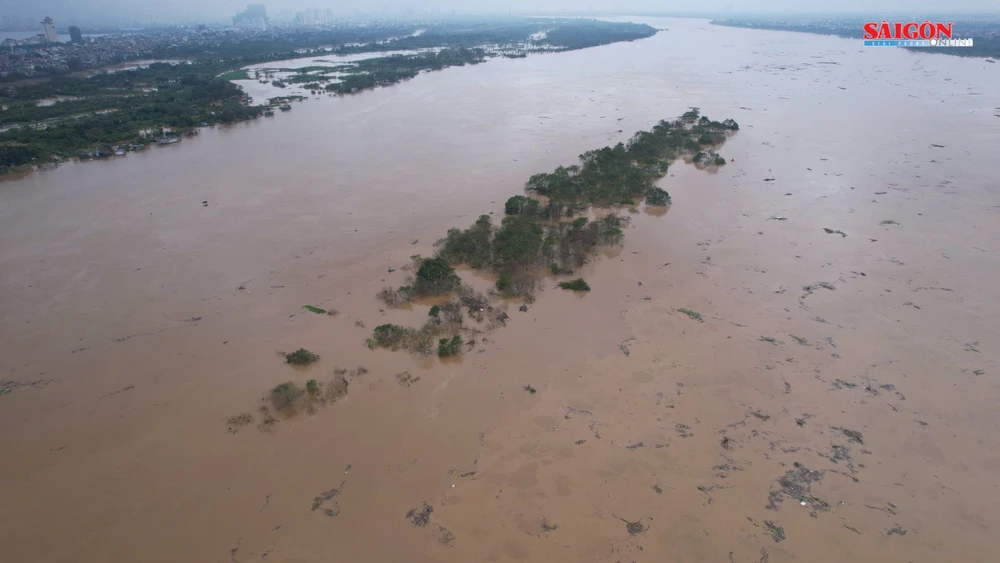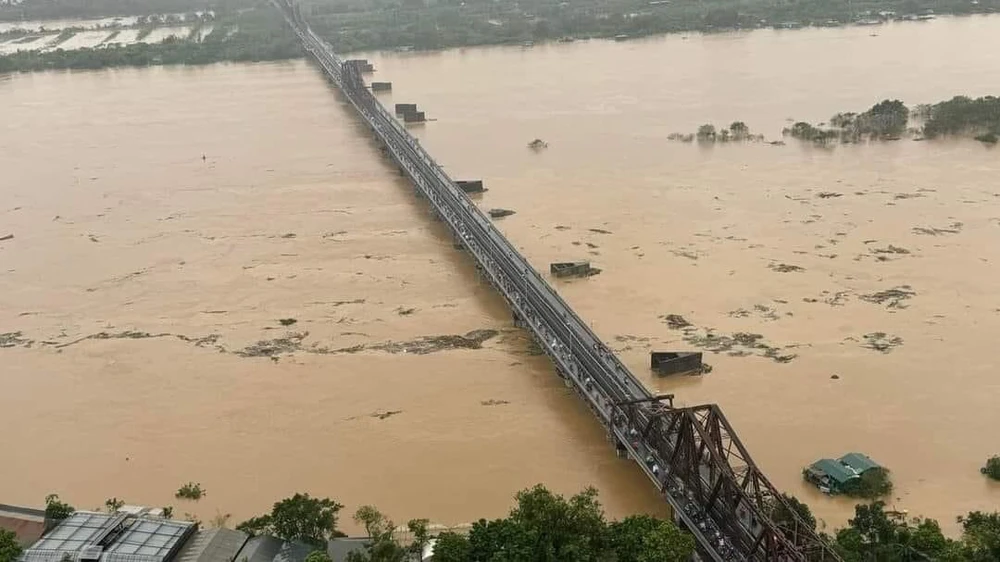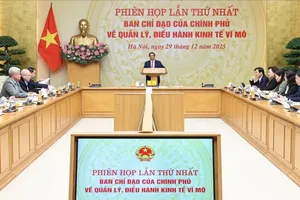
At 1 p.m., the water level on the Red River was 11.14 meters (0.36 meters below Alert Level 3), while on the Duong River at Thuong Cat, it was 10.49 meters (0.49 meters above Alert Level 2).
The water level on the Red River was forecast to rise to 11.25 meters (0.35 meters below Alert Level 3) by 7 p.m. on September 11.
Additionally, at noon, Hanoi reported that the water level on the Da River through the city was 15.06 meters (0.6 meters above Alert Level 1).

Given the rising water levels on these major rivers, the authorities have elevated the flood risk alert level in Hanoi to Level 3.
The rapidly rising flood levels on several rivers in Hanoi are causing severe flooding in low-lying areas, isles, and riverbanks, with increased risks of erosion and potential safety hazards to embankments in districts such as Bac Tu Liem, Hai Ba Trung, Dan Phuong, Phuc Tho, Son Tay, Thanh Tri, Gia Lam, Long Bien, Tay Ho, Hoan Kiem, and Dong Anh.
China begins controlled flood release from 2 p.m. on September 11
According to the Ministry of Agriculture and Rural Development, China announced it would release floodwaters starting at 2 p.m. on September 11, but the release would be controlled to manage water levels.
From morning to noon on September 11, social media reports indicated that China had announced the release of floodwaters downstream, raising concerns among some residents.

Regarding this issue, a representative from the Vietnam Disaster and Dyke Management Authority provided an update early in the afternoon on September 11. According to this official source, Vietnamese authorities have coordinated with their Chinese counterparts, who have agreed to work with Vietnam's Ministry of Agriculture and Rural Development to regulate the release of floodwaters from upstream.
Accordingly, China will begin releasing floodwaters around 2 p.m. on September 11. However, the release will be controlled to manage water levels, as stated by the disaster prevention agency in a press release. Additionally, Chinese authorities have issued a notice about operating flood releases from upstream reservoirs at a controlled rate, which will have a minimal impact on Vietnam.
On September 11, the Vietnamese Ministry of Foreign Affairs announced that, in response to China’s plan to release floodwater from Ma Lu Tang hydroelectric dam in Wenshan, Yunnan (upstream of the Lo River) due to heavy rain, it had urgently coordinated with the Chinese Ministry of Foreign Affairs and Yunnan Province.
Consequently, China decided to release water from the dam from 4:30 p.m. on September 11 to 2 p.m. on September 12, with a maximum volume of 200 cubic meters per second, instead of the initially planned schedule of 3 p.m. on September 11 to 2 p.m. on September 12 with a maximum volume of 250 cubic meters per second. China has committed to minimizing the flood release to ensure safety.
Additionally, China confirmed that no floodwater would be released from hydroelectric plants or dams on the upstream Red River. Vietnamese representatives in China will continue to monitor and coordinate efforts to mitigate flood damage.
According to SGGP Newspaper’s reporter, water levels on the Red River in the upstream areas of Lao Cai, Yen Bai, and Phu Tho had already begun to decrease by the morning of September 11. This information has been confirmed by the National Center for Hydro-Meteorological Forecasting.
At the same time, the Ministry of Agriculture and Rural Development has issued a directive to reduce the number of bottom spillway gates at Tuyen Quang Hydropower Reservoir. "After 3 p.m. on September 11, Tuyen Quang Hydropower Reservoir will maintain only four bottom spillway gates. Previously, Tuyen Quang Hydropower Reservoir opened eight bottom spillway gates and reduced to six gates this morning, September 11."
























